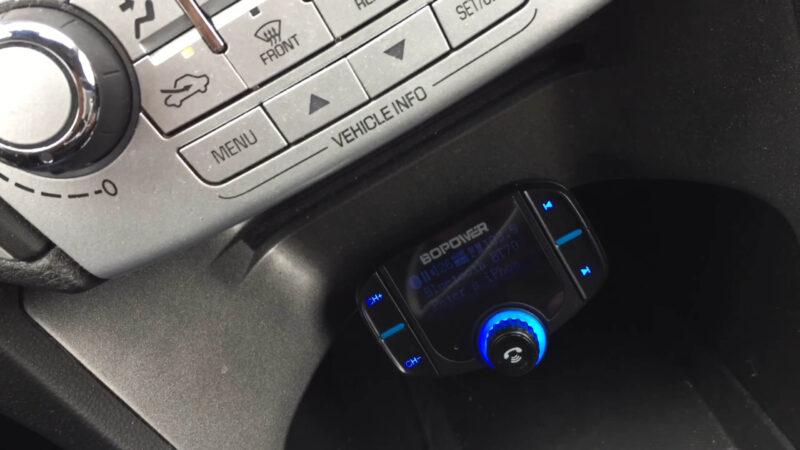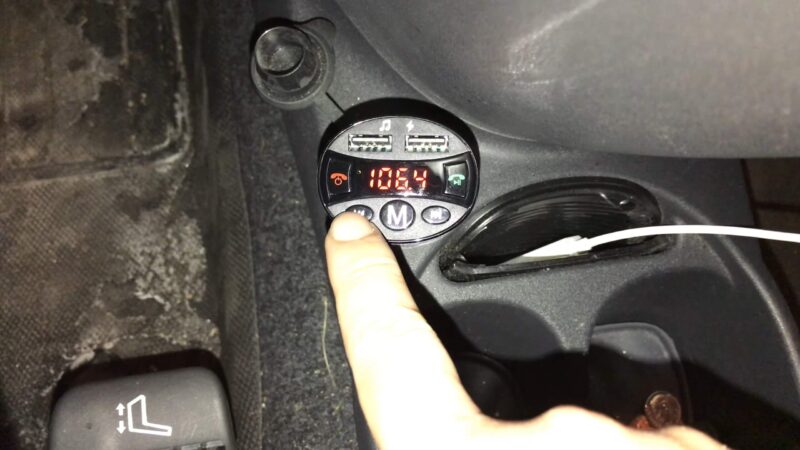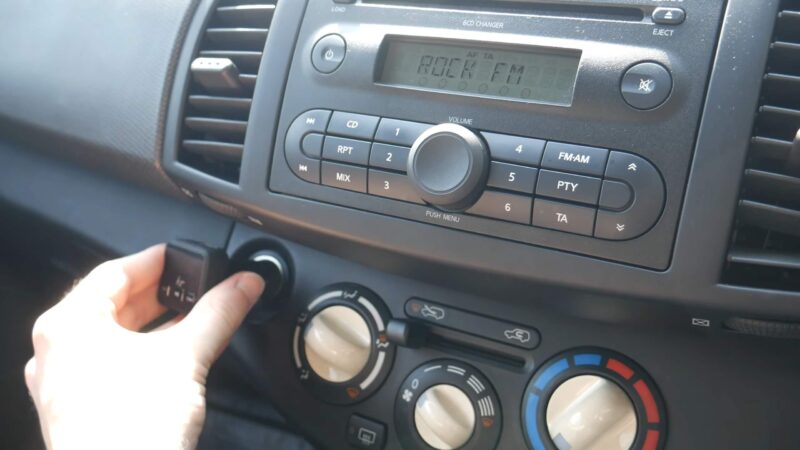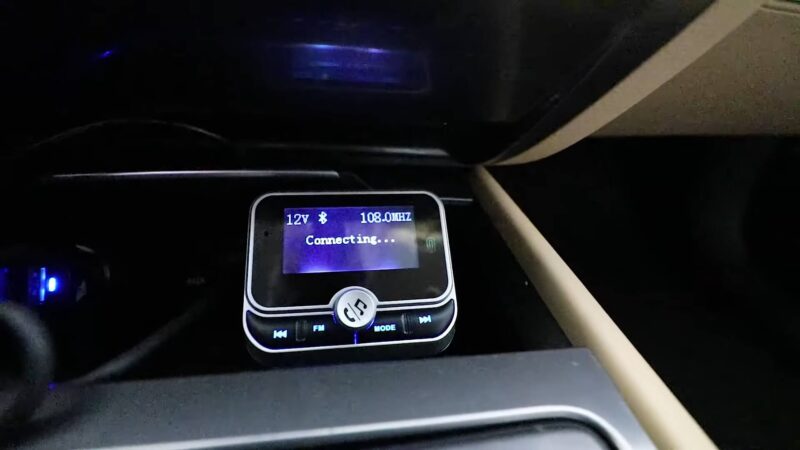Bluetooth FM transmitters have become a staple in modern vehicles, offering a seamless way to stream music or make hands-free calls by bridging the gap between Bluetooth-enabled devices and car FM radios. However, as convenient as they are, these transmitters are often plagued by static interference that can detract from the audio experience.
This article aims to provide a thorough understanding of Bluetooth FM transmitters, exploring their functionality and the common causes of static. With this knowledge as a foundation, we will delve into a variety of strategies and insights designed to effectively tackle and reduce static issues, ensuring an optimal audio experience in your car.
Key Takeaways:
- Identify and Mitigate Static Sources: Check for nearby electronic devices, switch frequencies, and inspect your transmitter and car stereo.
- Optimize Frequency and Position: Select less congested FM frequencies and position the transmitter close to the car’s FM antenna.
- Ensure Quality Power Supply and Regular Updates: Use stable power sources and keep the transmitter firmware updated.
- Seek Professional Help if Needed: Consult a car audio specialist for persistent issues.
Identifying the Sources of Static

Static in a Bluetooth FM transmitter can originate from various sources. It’s often caused by electromagnetic interference from other electronic devices, signal interference from local radio stations, or even issues within the transmitter itself. Identifying the root cause is the first step in troubleshooting.
- Check for Nearby Electronic Devices: Start by turning off or moving other electronic devices away from your transmitter and car radio. Devices like smartphones, tablets, GPS devices, or even car chargers can emit electromagnetic interference. Notice if the static decreases when these devices are removed or turned off.
- Switch Frequencies: Try changing to different frequencies on your FM transmitter. If static reduces or increases on certain frequencies, it may be due to interference from local radio stations occupying those frequencies.
- Inspect the Transmitter and Car Stereo: Examine your Bluetooth FM transmitter and car stereo for any signs of damage or wear. Loose connections, damaged wires, or deteriorating hardware can be sources of static.
- Test in Different Locations: Drive to a different location and test your transmitter. If static levels change, the interference might be environmental or related to specific local radio stations.
- Use a Different Bluetooth Device: Pair a different Bluetooth-enabled device with your transmitter. If the static level changes, the issue may be related to the specific device previously used.
- Test the Power Source: Plug the transmitter into a different power source or socket in your car. Power issues, such as fluctuations or dirty power, can cause static.
- Listen for Patterns in Static: Pay attention to the pattern of the static. Constant static might indicate a problem with the transmitter or car stereo, while intermittent static could be caused by external interference.
- Consult Local Frequency Guides: Look up local frequency guides or use apps that identify FM radio stations in your area. This can help you avoid frequencies that are heavily used by local broadcasters.
- Check for Software Updates: If your transmitter is firmware-upgradable, check for and apply any available updates. Sometimes, software issues can cause or exacerbate static problems.
- Seek Professional Diagnosis: If all else fails, consider seeking a professional diagnosis from a car audio specialist. They can provide a more in-depth analysis and identify issues that might not be apparent to the average user.
Choosing the Right Frequency

One of the most effective ways to reduce static is by selecting the optimal FM frequency. In most regions, certain frequencies are less congested and more likely to provide a clearer signal. Generally, frequencies at the lower end of the FM band (88.1 to 89.9 MHz) and the higher end (107.1 to 107.9 MHz) tend to be less crowded.
| Frequency Range | Description |
|---|---|
| 88.1 – 89.9 MHz | Lower end, less crowded |
| 90.0 – 92.9 MHz | Moderately crowded |
| 93.0 – 95.9 MHz | Often crowded |
| 96.0 – 98.9 MHz | Often crowded |
| 99.0 – 101.9 MHz | Moderately crowded |
| 102.0 – 104.9 MHz | Moderately crowded |
| 105.0 – 107.9 MHz | Higher end, less crowded |
Improving the Transmitter’s Position
The physical placement of the transmitter can significantly affect signal quality. Ideally, it should be positioned as close as possible to the car’s FM antenna. This placement minimizes the distance the signal needs to travel, reducing the chances of interference.
Ensuring Quality Power Supply

The power supply to the transmitter can also impact its performance. Using a high-quality, stable power source can reduce static. Avoid using low-quality USB adapters or power sources that might introduce electrical noise. If your transmitter is powered by your car’s cigarette lighter, ensure the socket is clean and provides a stable connection.
Regular Firmware Updates
For Bluetooth FM transmitters that support firmware updates, ensuring the device is running on the latest firmware can be critical. Manufacturers often release updates that improve functionality, including signal stability and clarity. Check the manufacturer’s website for firmware updates and follow their instructions for updating your device.
Using High-Quality Audio Files

The quality of the audio files you’re playing can also contribute to static. Low-quality, highly-compressed audio files can sound worse when played over an FM transmitter. Opt for high-quality audio files with higher bitrates to ensure the best possible sound.
Interference from External Sources
External sources like nearby radio stations, electronic devices in your car, or even atmospheric conditions can cause interference. Experimenting with different frequencies and minimizing the presence of electronic devices can help identify and mitigate these external sources of static.
Professional Assistance and Alternatives
If you’ve tried all the above steps and still experience static, it might be time to seek professional help. A car audio specialist can assess your setup and suggest specific solutions. Alternatively, consider using other technologies like AUX cables, cassette adapters, or even upgrading to a car stereo that natively supports Bluetooth connectivity.
Maintaining Your Bluetooth FM Transmitter

Regular maintenance of your transmitter can prevent future issues. This includes keeping the device clean, regularly checking for physical damage, and avoiding exposure to extreme temperatures or moisture.
FAQs
Can weather conditions affect the performance of my Bluetooth FM transmitter and cause static?
Yes, weather conditions can indeed affect the performance of your Bluetooth FM transmitter. High humidity, heavy rainfall, or thunderstorms can interfere with radio wave transmission, leading to increased static.
During such conditions, the air is more conductive, which can lead to more radio frequency interference. If you notice a correlation between weather conditions and increased static, it might be worth waiting for clearer conditions to see if there’s an improvement.
Is there a difference in static levels when using different types of mobile devices with the Bluetooth FM transmitter?
The type of mobile device used can sometimes influence the level of static experienced. Different devices have varying levels of Bluetooth signal strength and quality, which can affect the clarity of the FM transmission.
Additionally, the presence of other electronic components within the device can introduce electromagnetic interference. If you’re experiencing static, try connecting a different mobile device to see if there’s a noticeable difference in audio clarity.
Can the age of my car’s stereo system play a role in the amount of static I’m experiencing with a Bluetooth FM transmitter?
Yes, the age and quality of your car’s stereo system can impact static levels. Older car stereos might not be as well-equipped to handle FM signals cleanly, especially if they’re not properly maintained or if their internal components have degraded over time. Upgrading to a newer stereo system, or even just servicing your old one, can sometimes reduce static.
Will using a Bluetooth FM transmitter drain my car’s battery faster?
Bluetooth FM transmitters generally consume a very small amount of power. The impact on your car’s battery is minimal when the engine is running, as the alternator continuously recharges the battery. However, if you use the transmitter with the engine off for an extended period, it can drain the battery, just like any other electronic device.
Can the Bluetooth version of my device affect the static level in the FM transmitter?
The Bluetooth version of your device can have a minor impact on the quality of the connection, but it’s unlikely to significantly affect static levels. Newer Bluetooth versions offer better data transfer rates and more stable connections, which can improve overall sound quality.
However, static is primarily influenced by FM signal interference rather than the Bluetooth connection itself.
If I’m in a region with dense FM station coverage, is there any way to improve my Bluetooth FM transmitter’s performance?
In regions with dense FM station coverage, finding a clear frequency can be challenging. One strategy is to use a real-time FM frequency scanner app on your smartphone, which can help identify the least crowded frequencies in your area.
Additionally, adjusting the position of the transmitter or the car’s antenna can sometimes help find a clearer signal path. In extreme cases, an external FM antenna booster might be necessary to improve reception.
Final Words
Dealing with static in a Bluetooth FM transmitter involves a combination of selecting the right frequency, optimizing the device’s position, ensuring a quality power supply, and minimizing interference from both internal and external sources.
By following these guidelines, you can significantly enhance your audio experience and enjoy clear, static-free sound through your car’s FM radio.
Remember, every car and transmitter setup is unique, so some trial and error may be necessary to find the perfect solution for your specific situation. With patience and a methodical approach, you can successfully eliminate static and enjoy your music and calls without any annoying interference.
